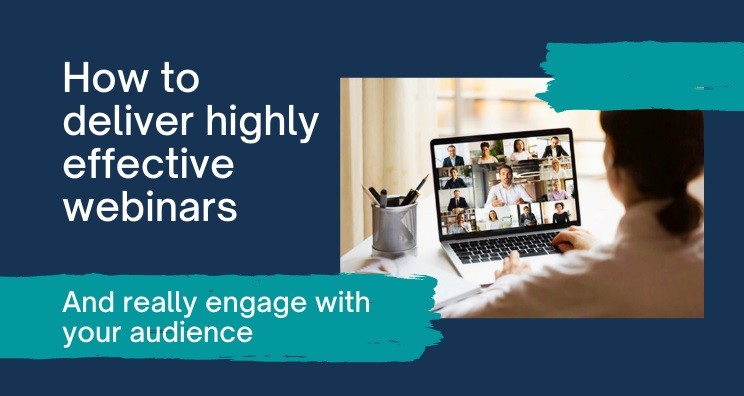Businesses may now use webinars as a potent tool to engage, inform, and convert their audience. Webinars offer a dynamic platform for increasing brand exposure, generating leads, and even monetizing your knowledge as the digital landscape constantly changes. In this post, we’ll examine the effectiveness of webinars and provide you practical advice on how to plan and monetize your webinar strategy.
Benefits of Webinars
Webinars have several advantages for companies of all sizes and in all sectors. In the first place, webinars give you the chance to interact personally with your target audience, building credibility and trust. They offer a forum for interactive conversation, enabling in-the-moment participation via chat, polling, and Q&A features. Additionally, you can showcase your expertise and thought leadership, positioning your brand as an authority in your industry.
Creating an Effective Webinar Strategy
It’s crucial to strategically prepare and carry out each stage if you want to have a webinar strategy that works. Start by determining who your target audience is and learning about their wants and pain areas. This will assist you in creating intriguing webinar topics that tackle their particular problems.
Pick a format that will help you achieve your objectives, such as instructive webinars, product demonstrations, roundtable discussions, or expert interviews. Each webinar should have a specific goal in mind, such as lead generation, brand exposure, or product promotion.
Next, think about the technical elements. Choose a reputable webinar platform that provides tools for managing registrations, tracking attendees, and analytics. To increase engagement, create visually engaging webinar slides or images. Through email marketing, social media, blog postings, and partnerships, advertise your webinars.
Promote your webinars through email marketing, social media, blog posts, and partnerships with industry influencers. Lastly, don’t forget to practice and rehearse your webinar to ensure a smooth delivery.
Monetizing Your Webinar Strategy
Additionally, webinars can be used as a technique for monetization, bringing in money for your company. Here are a few efficient ways to make money from your webinars:
a) Paid Webinars:
Think of presenting premium material via sponsored webinars. Create in-depth, unique seminars that offer attendees a ton of value. Promote package deals or early-bird discounts to encourage enrollment.
b) Affiliate Partnerships:
Work together to co-host webinars with firms that compliment one another and subject matter experts. By doing so, you can reach a wider audience, increase your reach, and possibly gain access to affiliate commissions or sponsorship opportunities.
c) Promotion of Products or Services:
Make use of webinars to promote your goods or services. Give attendees who purchase during or just after the webinar special discounts or bonuses. Make sure the sale process flows smoothly from the webinar.
d) Opportunities for Sponsorship:
Explore collaborations with sponsors who are pertinent to your sector as your webinar audience expands. In exchange for visibility to your interested audience, they can donate money or resources.
Improving Engagement and Conversions:
Participation during webinars is essential since it promotes conversions and fosters partnerships. To promote involvement, include interactive components such as real-time polls, chat tools, and Q&A sessions. To engage your audience, use storytelling strategies and actual instances from your life. To improve the webinar experience, offer helpful handouts or resources for download. In order to maintain the relationship and increase conversions, follow up with participants by sending them recordings of the sessions, supplementary materials, or special deals.
How to Assess Success and Improve Your Webinar Strategy
Measure key performance indicators (KPIs) and conduct data analysis to make sure your webinar approach is effective. Keep track of statistics like the registration rate, attendance rate, degree of engagement, conversion rate, and comments from attendees. To learn more about the preferences and behavior of webinar attendees, use analytics tools. Determine where you can improve, then adjust your strategy. Try out various webinar schedules, formats, and marketing strategies to improve your outcomes over time.
Create a Powerful Post-Webinar Follow-Up Plan
The time frame following the webinar is just as crucial as the actual event. Implement a thorough lead nurturing and conversion strategy. Send attendees personalized thank-you letters that include a webinar recording and any other resources that you offered. To encourage additional participation or purchases, take into account providing special post-webinar bonuses or discounts. To keep their attention and loyalty, keep interacting with your audience through email marketing, social media updates, and future webinar announcements.
Using SEO for Effective Webinars
Your webinar’s reach and visibility can be greatly increased through search engine optimization. Conduct keyword research to find popular and pertinent terms associated with the subject of your webinar. Strategically include these keywords in the webinar’s title, summary, landing page, and marketing materials.
Use relevant tags and write interesting meta descriptions to raise your search engine rankings. To further aid your SEO efforts, you should also transcribe your webinar recordings and make them accessible as written content.
Stay Updated with Best Practices for Webinars
New trends and best practices are always emerging in the webinar industry. To guarantee that your webinar strategy continues to be successful, keep up with the most recent business trends and technical developments.
To gain insights and learn from others’ experiences, follow thought leaders in your field, attend expert webinars, and engage in relevant forums or communities. You can stay ahead of the competition and provide your audience with outstanding webinar experiences by continuously learning and adapting.
Webinars have completely changed how companies interact with their customers and generate revenue. You can use webinars to increase your brand’s authority, create leads, and eventually increase your bottom line by putting into place a well-thought-out and profitable webinar strategy.
READ NOW: How to start a successful Freelance Business
To enhance the effectiveness of your webinars, remain focused, constantly improve your strategy, and pay attention to how trends are changing. In the digital age, embrace this dynamic medium and tap into its potential to advance your company.
Here Are Best Webinar Tools for 2023
Due to their features and functionalities, a number of webinar tools have become more popular in 2023. The following are a some of the top webinar tools for 2023:
Zoom: Zoom has been a popular webinar technology for a while now and is still a top pick. It has an intuitive user interface, HD video and audio, screen sharing, chat tools, and the capacity to run sizable webinars.
Microsoft Teams: Originally designed as a collaboration tool, Microsoft Teams is now a powerful webinar platform. Live events, screen sharing, chat, Q&A, and connection with other Microsoft products are some of the services it offers.
WebinarJam: This platform is well-known for its effective marketing tools. Live streaming, interactive polling, chat, analytics, and interaction with well-known email marketing platforms are all available. Additionally, WebinarJam accommodates a big number of guests.
GoToWebinar : GoToWebinar is a dependable and approachable webinar platform. It offers screen sharing, chat, analytics, HD video and audio, and registration management. Additionally, it gives you the chance to brand your webinar.
Cisco Webex: With features like HD video and audio, screen sharing, chat, whiteboarding, and recording capabilities, Cisco Webex is a complete webinar platform. Additionally, interoperability with various collaboration tools is provided.
Demio: For small to medium-sized organizations, Demio is a user-friendly webinar platform. It has features like HD streaming, chat, automated processes, and analytics. It incorporates with well-known marketing techniques as well.
Livestorm: Livestorm is a web-based webinar application that doesn’t require downloading. It offers capabilities such as live streaming, interactive polls, chat, analytics, and interfaces with CRM and marketing applications.
Adobe Connect: Adobe Connect is a robust webinar platform with many customizable features, HD video and audio, screen sharing, chat, and breakout rooms. Polls, tests, and surveys are among the interactive elements it offers.
Tips for Using Webinar Tools Effectively
Get to Know the Tool:
Spend some time getting to know the features and functions of the webinar tool you’ll be using before you conduct a webinar. You can utilize the platform’s features to their fullest extent and traverse it with ease if you do this.
Test Your Equipment:
Before the webinar, make sure that your webcam, speakers, microphone, and internet connection are all in good working order. Check the audio and video quality during a test run, and then make any required adjustments to provide a seamless experience.
Plan and Prepare:
To remain on task and convey your point clearly throughout your webinar, write a thorough blueprint or script. Prepare your slides, material, and any additional visual aids in advance. Practice your presentation so that you are familiar with the content and timing.
Engage Your Audience:
Use the interactive elements offered by the webinar platform to effectively engage your audience. Polls, Q&A sessions, and chat tools can encourage participation and make an environment more dynamic.
Use Visual Aids:
You can improve and aesthetically enhance your presentation by using visual aids like slides, movies, and graphics. Make sure your slides are succinct, clear, and eye-catching. Use a readable font size and stay away from cluttering slides.
Manage Your Time:
Keep to the time allotted and allow enough time for each segment of your presentation. Stay on schedule and don’t speed through the material. Keep in mind the attention span of your audience and work to maintain their interest throughout.
Practice Moderation:
If you’re allowing discussion or question-and-answer sessions during the webinar, choose a moderator to handle these activities. This guarantees that the meeting stays on course and in focus.
Give Your Audience Clear Directions:
Explain to your audience how to use the webinar’s resources, such as raising hands, using chat functions, or asking questions. At the start of the webinar, give instructions, and if required, repeat them.
Record the Webinar:
Consider recording your presentation during the webinar if the webinar platform supports it. In addition to allowing you to share the recording with attendees who were unable to attend, it also allows you to evaluate your performance for potential future growth.
Request Feedback:
Following the webinar, solicit audience feedback. To collect data and suggestions for improvement, use surveys or feedback forms. You can improve future presentations by analyzing this feedback and honing your webinar techniques.






